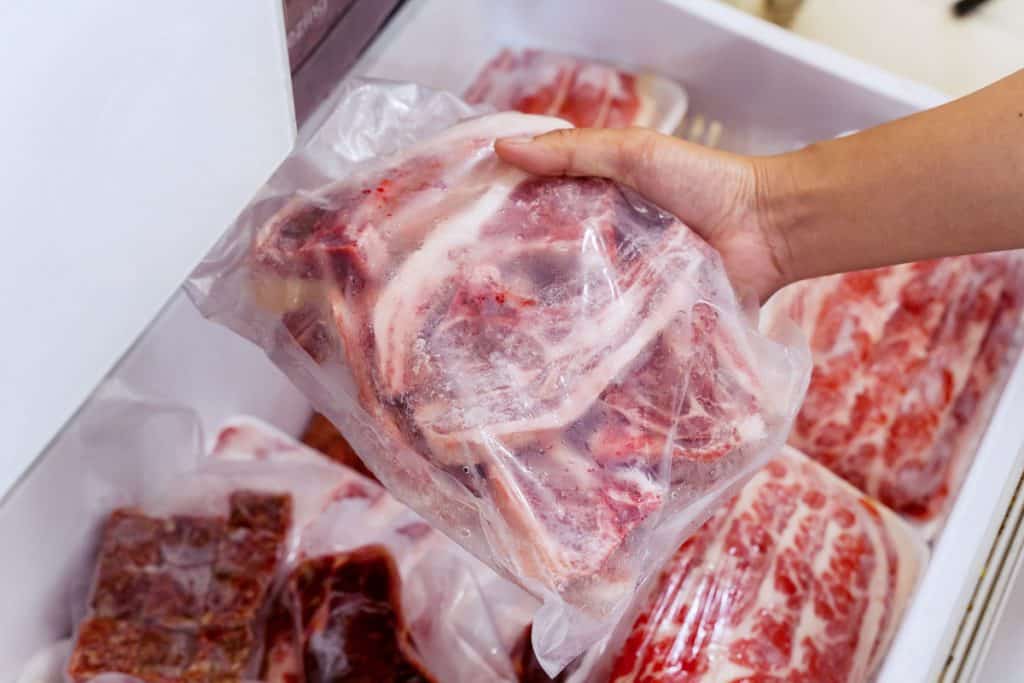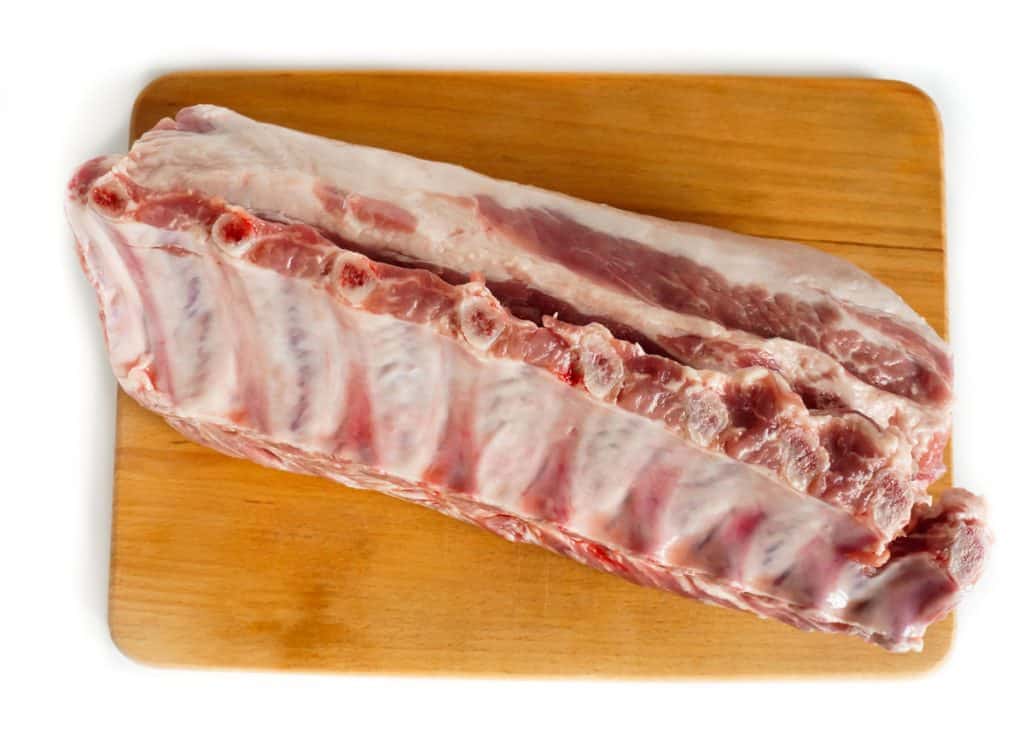How Long to Defrost Frozen Rib of Beef
Buying frozen pork ribs can be a real money-saver if you purchase the meat in bulk. The only problem is that you lose valuable time defrosting the meat.
Fortunately, the process doesn't have to put a damper on your barbecue, particularly if you plan ahead. Here's our how-to guide on how to defrost ribs in time for your next event.
How To Defrost Ribs
The best way to defrost ribs is in the refrigerator, preferably overnight. That way, the meat will have a chance to thaw out slowly, and you'll hardly notice the wait. If you're pressed for time, the cold-water method also works well.
Why It's Important
When you buy frozen meat, it's essential to follow the correct procedure for defrosting. If you ignore this advice, you're putting yourself and your guests at risk.
Improper thawing can invite dangerous food-borne pathogens, such as salmonella, E. coli, campylobacter, and staphylococcus. These bacteria thrive at temperatures between 40 and 140 degrees Fahrenheit, multiplying at a rate that can cause serious illness in humans who are unlucky enough to digest them.
Why don't these bacteria grow when the meat is frozen? At low temperatures, they go into a dormant state, where they remain until the meat has been thawed. The defrosting process allows them to become active again, which is why it's important to remain vigilant.
If the bacteria have caused the meat to spoil, it will smell "off" and feel slimy or sticky to the touch. It may also have an unusual color–gray or brown instead of pink. You might even spot a few moldy patches. If your ribs are showing any of these signs, discard them at once.
If you consume any of these food-borne bacteria, you can become ill almost immediately. However, the onset isn't always instantaneous. Symptoms can manifest themselves for up to six weeks after eating the spoiled or contaminated food. These may include vomiting, diarrhea, fever, body aches, headache, and abdominal pain.
While this is a frightening prospect, there's no need to worry as long as you handle the meat properly. Keep it in the freezer until a day or two before you're planning to serve it, then follow one of the procedures we've described below.
How To Defrost Ribs

Here's the first thing to remember about thawing frozen meat: Never attempt to defrost at room temperature. Raw ribs should never be left at room temperature for any longer than two hours. In fact, the same is true of cooked ribs, or any pork product for that matter.
According to the USDA Food Safety and Inspection Service (FSIS), thawing meat at room temperature causes it to enter the danger zone. Even if the meat still feels cold to the touch, there's a good chance that its temperature has risen above 40 degrees, at least in some places. It's always better to err on the side of caution when it comes to raw meat.
In the Refrigerator
When it comes to cooking pork ribs, it's always a good idea to plan ahead. The process takes time, so patience is key. This applies to the defrosting procedure as well.
A full rib rack can take up to 24 hours to thaw completely. If you've purchased a large package of ribs, you might want to give them at least 36 hours. You should always plan on cooking the meat as soon as possible after thawing, but the ribs should keep in the refrigerator for three to four days.
Before you begin, check the temperature of your fridge. It should be no higher than 40 degrees. If it's any lower, the ribs will take a bit longer to thaw. This isn't necessarily a bad thing, but you'll want to take it into consideration if you're working on a tight schedule.
Place the ribs in a sturdy container with sides high enough to catch any runoff as the meat thaws. If these juices come into contact with any other items in your fridge, the bacteria can infect those as well. To be on the safe side, always thaw meat on the bottom shelf of the refrigerator.
Should you change your plans and decide not to cook the ribs within five days, you can put them back in the freezer. This will halt the growth of any bacteria, and the ribs will still be safe to eat when you defrost them again. Just bear in mind that re-freezing the meat may lead to a noticeable drop in quality.
In a Cold Water Bath
The cold-water method is the best option when you're only defrosting a few ribs at a time. It's faster than thawing the meat in the fridge, but it does require a bit more care and attention.
Place the frozen ribs in a zip-top bag or leak-proof container. You want to make sure there's a tight seal around the meat, or water could leak in and ruin it. Try to force as much air as possible out of the bag before you seal it.
Fill a large bowl with cold tap water and submerge the wrapped ribs in the water bath. Add a few ice cubes if your tap water doesn't feel cold enough.
Let the ribs thaw for 30 minutes, then drain the water and replenish it with a fresh batch. After another half hour, check the meat to find out if it's fully thawed. A pound or two of ribs might only need an hour in the cold water, while larger servings could take up to four hours to thaw.
If you've used the cold-water method, don't attempt to refreeze the meat afterward. It should be cooked as soon as possible to prevent bacteria from forming. Fortunately, anyone who uses this method is usually planning to cook the ribs off right away.
In the Microwave
This is the quickest method for defrosting ribs. However, it can also be tricky to get it right, which is why we've listed it last. If you have time, thaw the ribs in the refrigerator or in a cold-water bath. The results will be more impressive, and those methods will allow you more time to tend to other matters.
That said, it's fine to defrost in the microwave if you have no other option. Check your microwave's settings to find out if it has a defrost feature. If it doesn't, make sure to set the power to 30 percent before you proceed.
Take the ribs out of the freezer and remove any plastic wrap and foam packaging. These wrappings aren't heat-resistant. If you put them in the microwave, they're likely to melt, which could cause dangerous chemicals to contaminate the meat.
Set the ribs in a microwave-safe container with a lid, then place the lid loosely over the surface. If you're using the defrost setting, stop the microwave and rotate the container about halfway through the cycle. Otherwise, set the timer for three minutes, rotate the container, then put the ribs back in to thaw for another three to four minutes.
When you use this method, there's always a chance that the meat may cook around the edges while the interior is still frozen. The best way to combat this is to go slowly, rotating the meat every few minutes. The thicker the ribs are, the more difficult the process will be.
Never put meat that's been defrosted in the microwave into the fridge. You'll need to cook the thawed ribs immediately after defrosting. Otherwise, you could be inviting the aforementioned bacteria to join the party.

Skipping the Thaw
Finally, we should point out that there's no need to thaw the ribs at all. While we would certainly recommend doing so, it's fine to start cooking the meat when it's still in its frozen state.
Should you decide to go this route, be aware that the cooking process will take a lot longer. Grilling frozen ribs can take about 50 percent longer than if you'd thawed the meat in the first place. Since ribs benefit from long, slow cooking, you're really not saving yourself that much time by skipping the thaw.
Even if you've thawed the meat beforehand, make sure to cook pork ribs to an internal temperature of at least 145 degrees before removing them from the grill. For best results, you should also let the meat rest for 10-15 minutes before you serve it.
Final Thoughts
Making ribs on the grill is one of our favorite pastimes. Although the defrosting process isn't the most enjoyable aspect, it's just another step.
If you know you'll be grilling a batch of ribs next weekend, move them from the freezer to the fridge on Wednesday or Thursday. They'll have plenty of time to thaw, and you won't have to worry about a thing.
Best of luck, and happy grilling!
landaverdeflipper.blogspot.com
Source: https://bbqhost.com/how-to-defrost-ribs/#:~:text=In%20the%20Refrigerator,-When%20it%20comes&text=A%20full%20rib%20rack%20can,for%20three%20to%20four%20days.
0 Response to "How Long to Defrost Frozen Rib of Beef"
Post a Comment